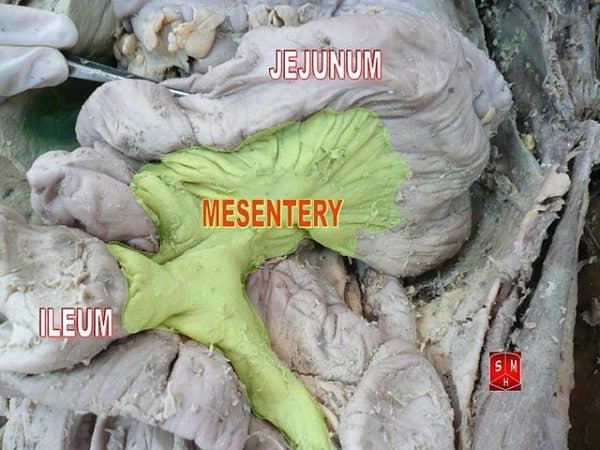
 The human body has just grown a new organ, the mesentery, whose re-classification could open up new approaches to diagnosing and treating a range of intestinal diseases including Crohn’s disease, inflammatory bowel disease and colorectal cancer.
The human body has just grown a new organ, the mesentery, whose re-classification could open up new approaches to diagnosing and treating a range of intestinal diseases including Crohn’s disease, inflammatory bowel disease and colorectal cancer.
The history of the debate goes back centuries. The mesentery is a group of folds of fatty connective tissue that work to keep the large and small intestines in place within the abdominal cavity and help link up the various gastrointestinal organs such as the stomach, rectum, colon and pancreas, and it was previously designated an organ under early anatomical classification (even called such by Leonardo da Vinci) but lost its status in the 19th century with the publication of the first edition of Gray’s Anatomy, still the standard today on human anatomy, in 1858. There and ever since, the mesentery has been referred to as a series of disparate but associated structures within the abdomen, not as a continuous organ.
Yet in a new study published in the journal The Lancet – Gastroenterology and Hepatology researchers have argued for the mesentery’s status as an organ, based on a systematic review of recent work which has revealed its unique anatomical and functional properties. Led by Dr. J. Calvin Coffey, foundation chair of surgery at the University of Limerick in Ireland, the new view has been met with general agreement and has already been adopted in the most recent edition of Gray’s Anatomy.
“The anatomic description that had been laid down over 100 years of anatomy was incorrect,” says Coffey. “This organ is far from fragmented and complex. It is simply one continuous structure.”
But the turnabout is more than just a matter of classification, says Coffey, who sees the new development as initiating a new approach to both the study of the human body and the treatment of disease. “Up to now there was no such field as mesenteric science. Now we have established anatomy and the structure,” says Coffey. “The next step is the function… you can identify abnormal function, and then you have disease. Put them all together and you have the basis for a whole new area of science.”
As the mesentery extends across all the other organs of the abdomen, conceiving it as having a continuous function and purpose will mean that diagnosing abnormalities affecting the mesentery and surrounding organs will be charted along a different path. Even surgical and investigative approaches to accessing the new organ may change, as less invasive options such as endoscopy may be deemed appropriate for diagnosis.
“For doctors, it provides us with an opportunity to refresh our approach to many diseases such as inflammatory bowel disease and others,” Coffey said. “This could help in identifying the mechanisms underlying these conditions and help us in unraveling their cause and how they develop.”
Inflammatory bowel disease (IBD) designates a group of conditions which include Crohn’s disease and ulcerative colitis. Canada ranks as one of the countries with the highest rates of IBD, according to Crohn’s and Colitis Canada. One in every 150 Canadians lives with Crohn’s or colitis, and the number of new cases of Crohn’s in Canadian children has almost doubled since 1995.
Leave a Reply
You must be logged in to post a comment.



 Share
Share Tweet
Tweet Share
Share




Comment